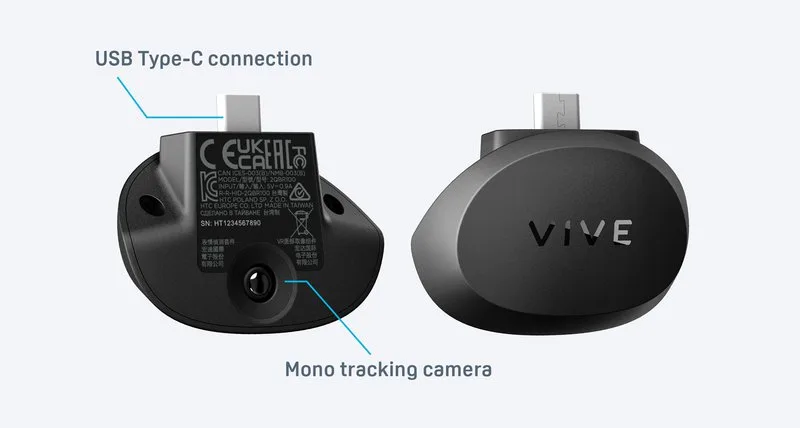
With other virtual reality headset makers expected to bring face- and eye-tracking functions to their upcoming models, HTC is looking to keep pace with new accessories for its Vive Focus 3. The company says the add-ons will offer “more natural and immersive VR experiences” and enable accessibility functions such as gaze control.
The $99 Facial Tracker uses a mono camera to capture expressions from the wearer’s lips, jaw, cheeks, chin, teeth and tongue. The idea is to replicate “lifelike facial expressions and mouth movements” from the user on avatars in real-time.
HTC says the Facial Tracker has a 60Hz tracking rate and can “synchronize lips to voice with minimal latency” — the system has a response time of under 10 milliseconds. The device plugs into the headset’s USB-C port and weighs around 11.6 grams, so it shouldn’t weigh your head down.

As for the $249 Eye Tracker, it has a dual camera system that can capture gaze direction and origin, blinks and your pupil size and position. It weighs around 54 grams and it attaches to the headset magnetically. HTC notes that “realistic” eye activity can improve non-verbal interactions in VR. What’s more, the eye-tracking module can be used for research purposes.
The company suggests that presentation coaching, training and customer service management are good use cases. HTC, which released a wrist tracker accessory for the headset earlier this year, adds that eye and facial tracking could be helpful for fostering better engagement in virtual social settings, such as events, remote meetings and hanging out.
The attachments might even be employed for motion capture to help animate characters’ faces in TV, film and games. HTC says developers can integrate users’ biometric data into applications with the help of the Vive Wave SDK and upcoming OpenXR support. There’s also Unity, Unreal Game Engine and Native integration.
HTC isn’t the only VR company that’s embracing face and eye tracking. Meta’s next headset, which the company will reveal in October, will have eye and face tracking as well. Accessibility functions like gaze control are definitely welcome, but whether most users are comfortable with headsets monitoring their eyes and facial expressions remains to be seen.
Author: K. Holt
Source: Engadget



